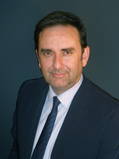Metamaterials (MTM) are artificial materials engineered to have properties that may not be found in nature. They are constituted of elements small in terms of a wavelength realized by conventional materials such as metals or dielectrics, arranged in periodic patterns to obtain a certain average constitutive electric and magnetic parameters. Metasurfaces (MTS) constitute a class of thin Metamaterials characterized by average boundary conditions. Objective of the course is to give basic background, physical insight, and a view on the engineering application at the state of the art about Metamaterial and Metasurfaces. Emphasis will be given on EM application at microwave frequency, with some lecture about nanostructured metamaterials at optical frequencies
About the Speaker

Stefano Maci was born in Rome in 1961. He received his laurea degree (cum laude) in Electronic Engineering from the University of Florence, Italy, in ’87. From 90 to 98 he was with the Department of Electronics of the University of Florence. Since ’98 he is with the University of Siena, Italy, where he presently is a Full Professor, with responsibility of a group of 15 researchers (http://www.dii.unisi.it/ lea/). His research interests are focused on Electromagnetics, with emphasis to high-frequency ad numerical methods for antennas. He was a co-author of an Incremental Theory of Diffraction for the description of a wide class
of electromagnetic scattering phenomena at high frequency, and of a diffraction theory for the high-frequency analysis of large truncated periodic structures.
He is presently working on the following research themes: i) high-frequency methods for radiation and scattering problems, ii) Beam methods, iii) Computational Elecromagnetics, iv) large phased array antennas, v) planar antennas and multilayer structures, vi) reflector antennas and feed horns, vi) Metamaterials, vii) Artificial surfaces. He is keeping scientific cooperation mainly with Chalmers University of Technology, Technical University of Denmark, Ecole Politechnique Federale de Lausanne, Ohio State University, University of Illinois, University of Kalshrue, Queen Mary University of London, University of Zagreb, University of Louvain. In ’97 he was a guest Professor at the Technical Institute of Denmark, Copenhagen.
He was responsible of projects funded by the European Union (EU), by the European Space Agency (ESA-ESTEC) and by various European industries, and WP leader of the Antenna Center of Excellence (ACE, FP6-EU). He was International Coordinator of a 24-institution consortium of a Marie Curie Action (FP6). He also was carried out several projects supported by the European Union (EU), the Italian ministry of research (MIUR), the European Space Agency (ESA-ESTEC), the European Defense Agency (EDA), the US-Army Research Laboratory (ARL), and by various industries and research institutions: EADS-MATRA, (Tolosa, Francia), IDS (Pisa, Italia), TICRA (Copenhagen),
ALENIA SPAZIO (Roma), ALENIA MARCONI SYSTEM (Rome, Italy), SAAB-ERICSON SPACE (Goteborg, Svezia), THALES (Paris, France), TNO (L’Aia, Olanda), OTO MELARA (La Spezia, Italia), Selex Galileo (Florence, Italy). Selex Communication (Florence), Thales Alenia Space (Rome), Selex Sistemi Integrati (Rome). In 2001, he was one of the founder of the Italian School of Electromagnetism, and he was chair of the relevant board for the first 3 years and a member of the board since 2007. In2003 he was elected Fellow of IEEE (Antennas and Propagation Society) for his scientific contributions on diffraction theory of periodic printed structures in stratified media. In 2004 he founded the European School of Antennas (ESoA), that presently comprises 30 courses on Antennas, Propagation, Electromagnetic Theory, and Computational Electromagnetics, and about 150 among the best teachers of Europe (among which eleven IEEE Fellow) coming from 30 European research centres. ESoA offers 12 one week courses per year. He is from 2004 the Chair of the ESoA board. In 2005-2007, he was Italian National representative of the NATO SET-TG 084 “Emerging Technology for Sensor and Front-endso. Since 2008 he is honorary President of LEAntenne e
Progetti SPA (Valeggio sul Mincio, VE). Stefano Maci was associate Editor of IEEE Transactions on EMC (099-O01), two times Guest Editor of IEEE Transaction on Antennas and Propagation (IEEE-TAP), and Associate Editor of IEEE Antennas and Propagation. He presently is a Director of the European Association on Antennas and Propagation (EuRAAP), a member of the Technical Advisory Board of the URSI Commission B, a member elected of the AdCom of IEEE Antennas end Propagation Society, the Director of the PhD school of Information Engineering at University of Siena, the Faculty representative of the International Affair Committee and a member of the strategic Board of
Research of his University.
He was recipient of national and international prizes and recognitions and best paper awards. He is principal author or co-author of more than 100 papers published in international journals, (among which about 70 on IEEE journals), 10 book chapters, and about 300 papers in proceedings of international conferences. His h index (h=21, source: Scopus) is among the highest of the Antennas and Propagation community